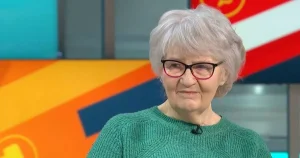Inflation rises above Bank of England target again – what it means for your money

UK inflation has climbed above the Bank of England target once again, official figures released today show.
Inflation rose to 2.3% in the 12 months to October 2024, its first increase in three months, and up from the 1.7% that was recorded in September. The latest inflation figure is slightly worse than the 2.2% that had been expected by the majority of economists. It marks the sharpest month-on-month increase in the rate of inflation for two years.
However, inflation is still down from its peak of 11.1% in October 2022. The Bank of England has a target of 2% inflation and its previous drops had paved the way for two interest rate cuts. The Office for National Statistics (ONS) releases inflation data every month and said the latest increase was down to higher energy costs.
The Ofgem energy price cap rose from £1,568 to £1,717 a year for the typical household on October 1, a rise of £149 on an annual bill for someone with average energy usage. Electricity prices increased by 7.7% in October, compared to a fall of 7.5% last year, while gas prices increased by 11.7% in October, compared with a 7% drop last year.
However, the ONS said this increase was partially offset by falls in live music and theatre ticket prices. Core inflation – which excludes energy, food, alcohol and tobacco, and is closely watching by the Bank of England – rose to 3.3% in the 12 months to October 2024, up from 3.2% in September.
ONS chief economist Grant Fitzner said: “Inflation rose this month as the increase in the energy price cap meant higher costs for gas and electricity compared with a fall at the same time last year. These were partially offset by falls in recreation and culture, including live music and theatre ticket price. The cost of raw materials for businesses continued to fall, once again driven by lower crude oil price.”
Treasury Chief Secretary Darren Jones said: “We know that families across Britain are still struggling with the cost of living. That is why the Budget last month focused on fixing the foundation of our economy so we can deliver change.
“That includes boosting the national minimum wage, freezing fuel duty and protecting working people’s payslips from higher taxes. But we know there is more to do. That is why the Government is focused on economic growth and investment so we can make every part of the country better off.”
Shadow chancellor Mel Stride said: “Having brought inflation back down to target, we know how important it is for all of us that the Government does the same. What is worrying about today’s announcement is that inflation is running ahead of expectations and official forecasts state these figures are not expected to improve. Labour’s Budget will push up inflation and mortgage rates. It’s higher inflation and lower growth under Labour.”
Full list of benefits that make you eligible for Cold Weather Payments as first postcodes triggered
Greggs, Amazon, Tesco, Asda, Sainsbury's, Aldi warn of job losses and price increases
What is inflation?
Inflation shows how the price of goods and services has changed over time, with the Consumer Price Index (CPI) being the primary measure of inflation. The ONS tracks a regularly updated "basket of goods" and services that represents what households are buying. However, the main CPI figure you see in headlines is used to represent an average. This means the individual prices of some goods may be higher or lower than this main figure.
What does it mean for prices in shops?
When inflation is lower, it does not mean prices have stopped rising – it just means they're going up at a slightly slower rate than before. For example, the rate of inflation is now at 2% – so this means an item that cost £1 last year would now cost £1.02.
How is inflation linked to interest rates?
The Bank of England increased interest rates over the course of almost two years to try and lower inflation. The base rate influences the interest rate you're offered by banks and lenders – so when it is higher, borrowing becomes more expensive and this means people have less money to spend elsewhere. When people spend less money, this brings down demand and lower prices, which should then lower inflation.
But a higher base rate has pushed up mortgage payments for millions of homeowners, leaving households financially stretched. The base rate stood at just 0.1% in December 2021. It reached a peak of 5.25% in August 2023. It was finally cut to 5% in August 2024, with a further cut to 4.75% confirmed in November 2024. The next base rate decision is due on December 19.
Why did inflation peak?
Inflation began to rise in 2021 largely due to higher costs of energy and food. Demand for energy increased after Covid and then this was exasperated by the Russian invasion of Ukraine. The war also pushed up food prices, due to rising costs for fertilisers and animal feed. Both energy and food price rises have come down in recent months, although they are still higher than before.
Will inflation keep rising?
The Bank of England expects inflation to rise to about 2.75% in the second half of this year, following sticky price rises in the service sector and strong wage growth. It then expects inflation will fall back down to 1.7% in 2026, then to 1.5% in 2027.
Best-selling Clinique skincare buy drops to £9 at Boots– beating its £10 Tuesday sale price



